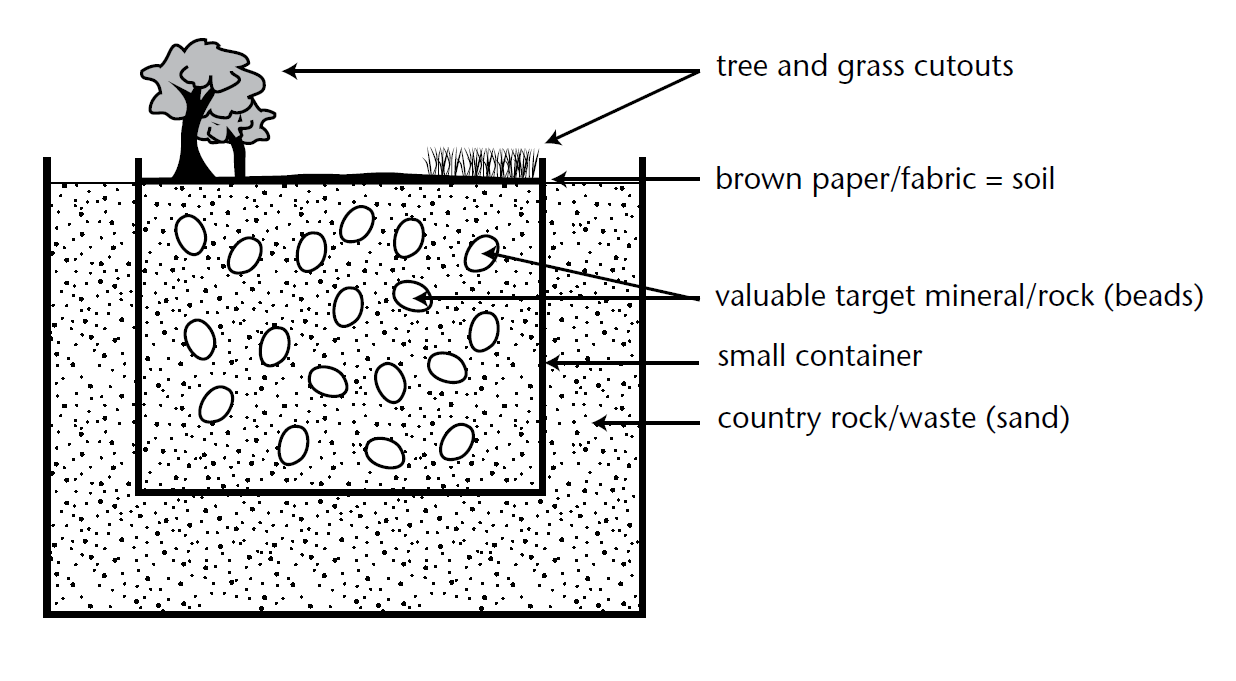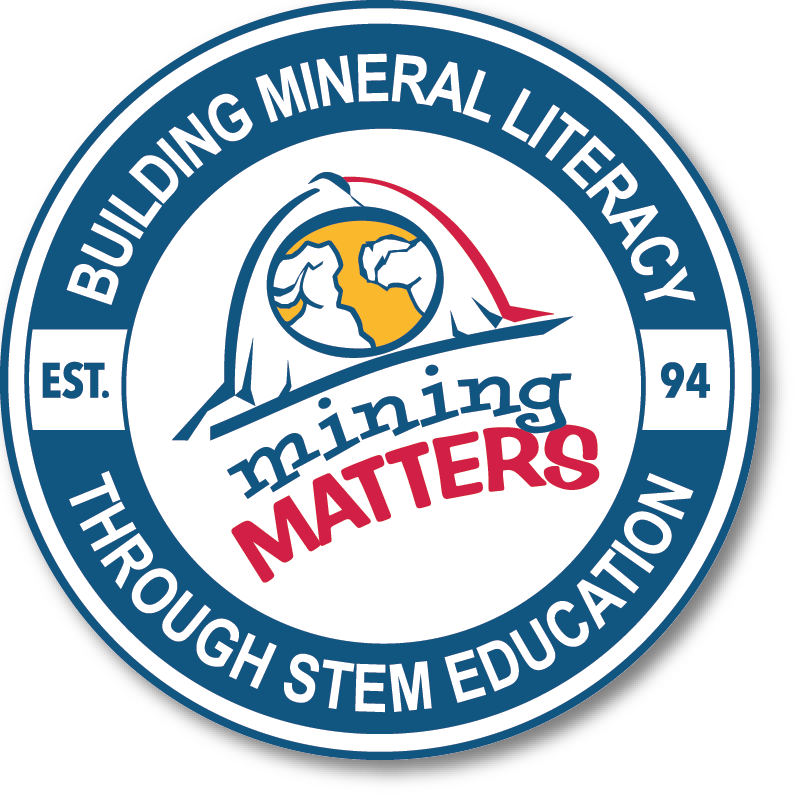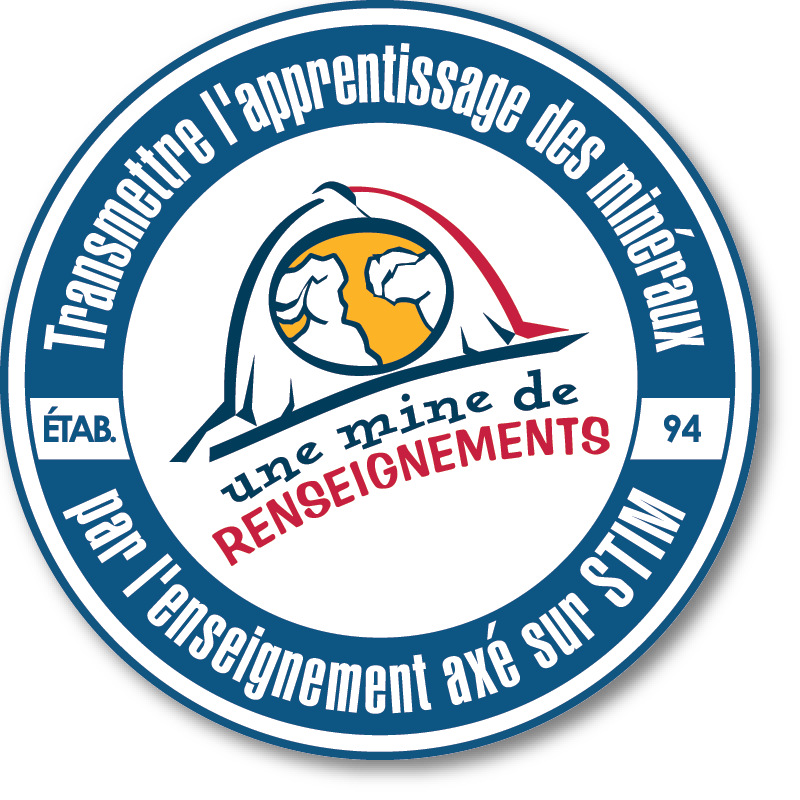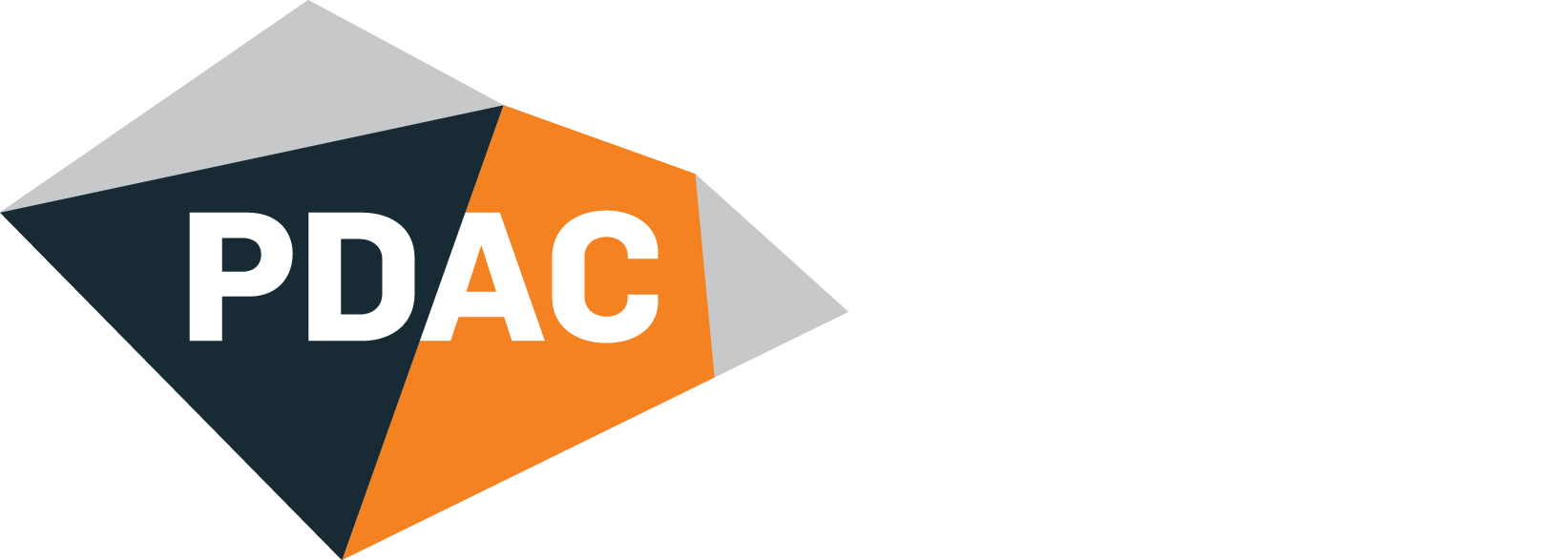Operating a Surface Mine
Background
Two common procedures used to separate minerals from rocks take advantage of the physical properties of the sought materials. When mixed with liquid, heavier or denser minerals sink, and therefore can be
separated from lighter minerals. This procedure is called Heavy Media Separation. This process could be used to separate heavier chalcopyrite from lighter quartz when mining for copper and nickel. If the valuable
minerals are magnetic, they can be separated from other rock and minerals by passing the crushed ore under a powerful magnet. This procedure is called Magnetic Separation.
When reclaiming a surface mine, even if all the remaining rock (called “waste” rock, meaning rock devoid of valuable mineralization) were replaced into the surface mine, the depression formed by mining would not be refilled completely. However, the wall of the depression can be contoured to gentle slopes, the surface can be covered with topsoil, and grass and trees can be planted to create a naturalized landscape or environment. In some cases, mined-out surface mines and rock quarries have been made into recreational lakes, public parks, rock gardens, farmland, and housing sub-divisions.
Mining companies use grass to stabilize slopes and reduce soil erosion, and they plant seeds and seedlings to encourage the establishment of plant and tree communities. As the plants and trees mature, animal species diversity increases in the area. The habitat reclamation process is highly monitored by scientists from many disciplines.
Objectives
During this activity, you will “operate” a surface mine model. You will investigate how mining companies extract valuable minerals that are close to the surface of the Earth and then reclaim the land after the process.
Preparation
1. Create one model of a surface mine. There is considerable flexibility in the materials that may be used: the general principle being to have a valuable mineral or rock that must be separated from a waste or county rock component. Look at the suggestions in the table below; you can substitute the different valuable target minerals/rocks into alternate country rock.
2. Build the target rock body or mineral ore.
a) In a small container (~250 ml), mix a 4:1 ratio (200 ml: 50 ml) of country rock/waste material and valuable target rock/mineral.
b) Lay brown construction paper or fabric on top of the rock to represent soil.
c) Place tree and grass cut-outs or magazine pictures of natural habitats on top of the soil.
3. (Optional) Put the target rock body or ore in a wider environment.
Either a) Rest the smaller container inside a larger container (750 ml or 1 litre). Fill the area around the inner container with the same country rock material as it contains, making sure that the rim of the inner container can be seen after filling.
Or b) Submerge the small containers in a sand table, making sure the rims can be seen.

Instructions
1. Draw a picture of your model before any mining starts.
2. Make a list of the steps that you will follow to mine and reclaim your surface mine.
3. a) Mine the rock containing the minerals and place it on the table in front of you.
b) Separate the mineral from the rock. Keep the mineral in a paper cup.
c) Draw a picture of what your surface mine looks like during mining. Remember to include the pile of rock that you took out of the mine.
4. Answer the questions:
- How has mining changed the land?
- How could we use the pile of mined-out rock that you took from your surface mine?
5. a) Reclaim your mine. As much as possible, make the model look the way it did before mining, but without the minerals.
b) Draw a picture of the land after mining.




